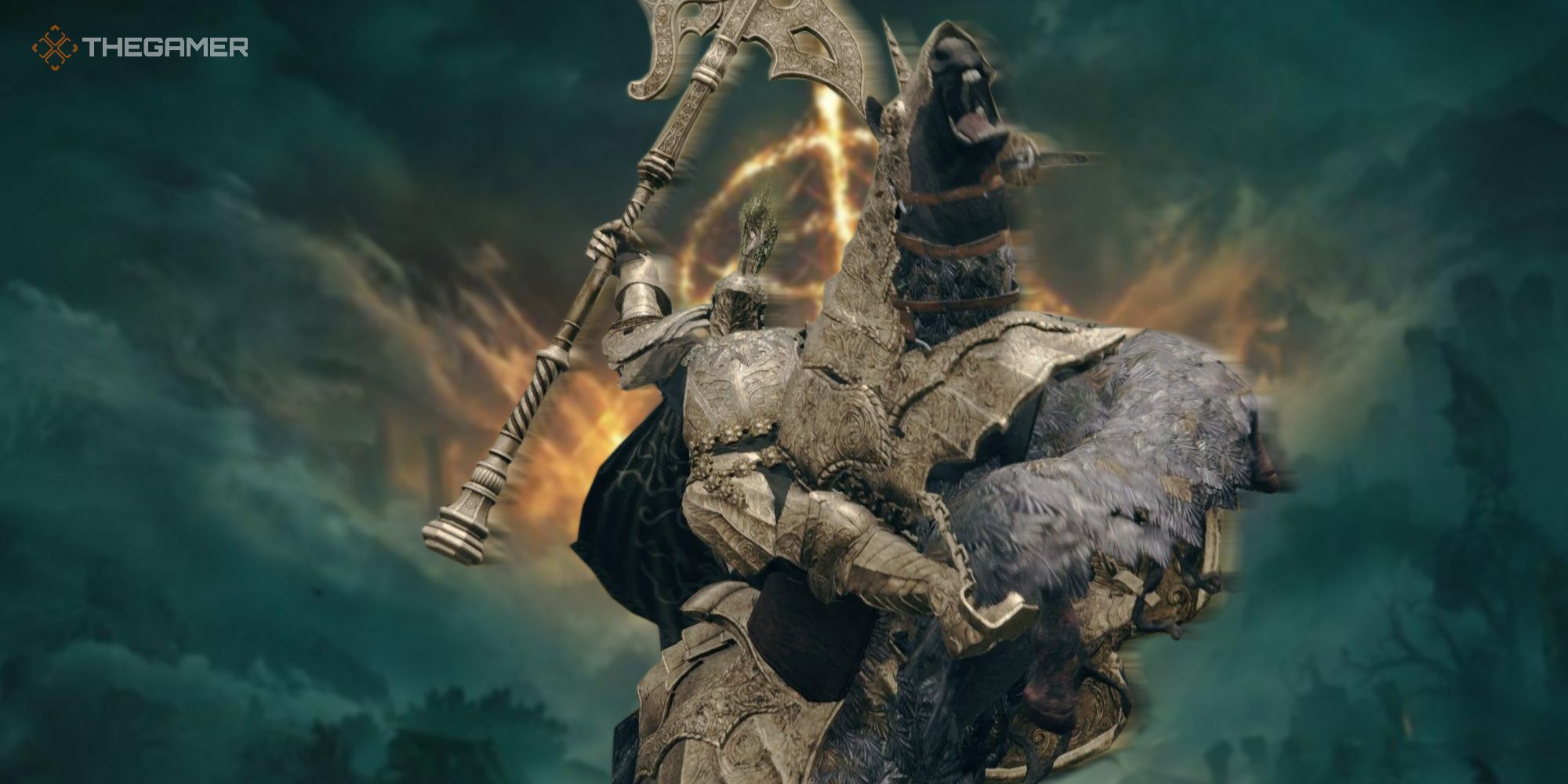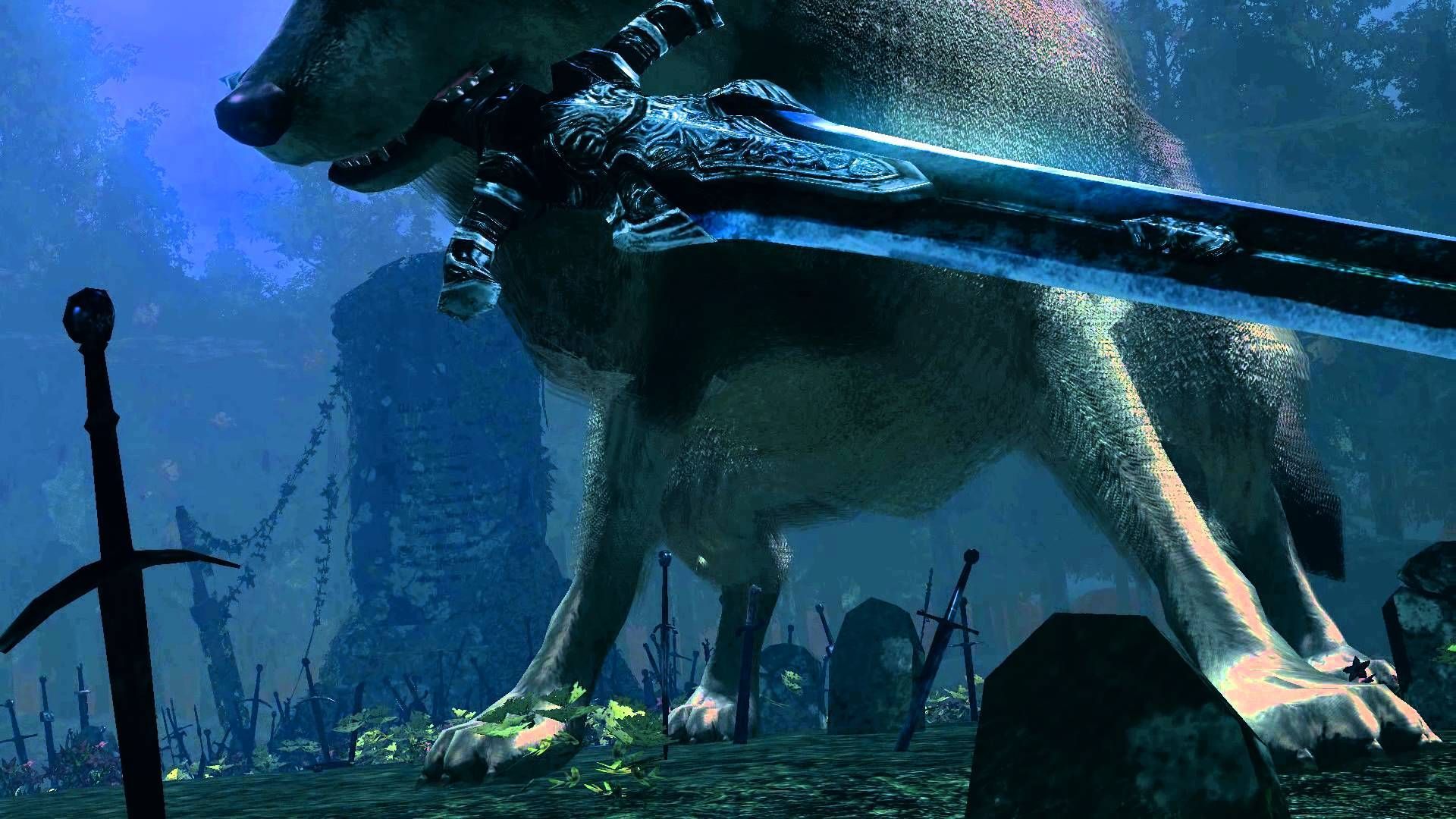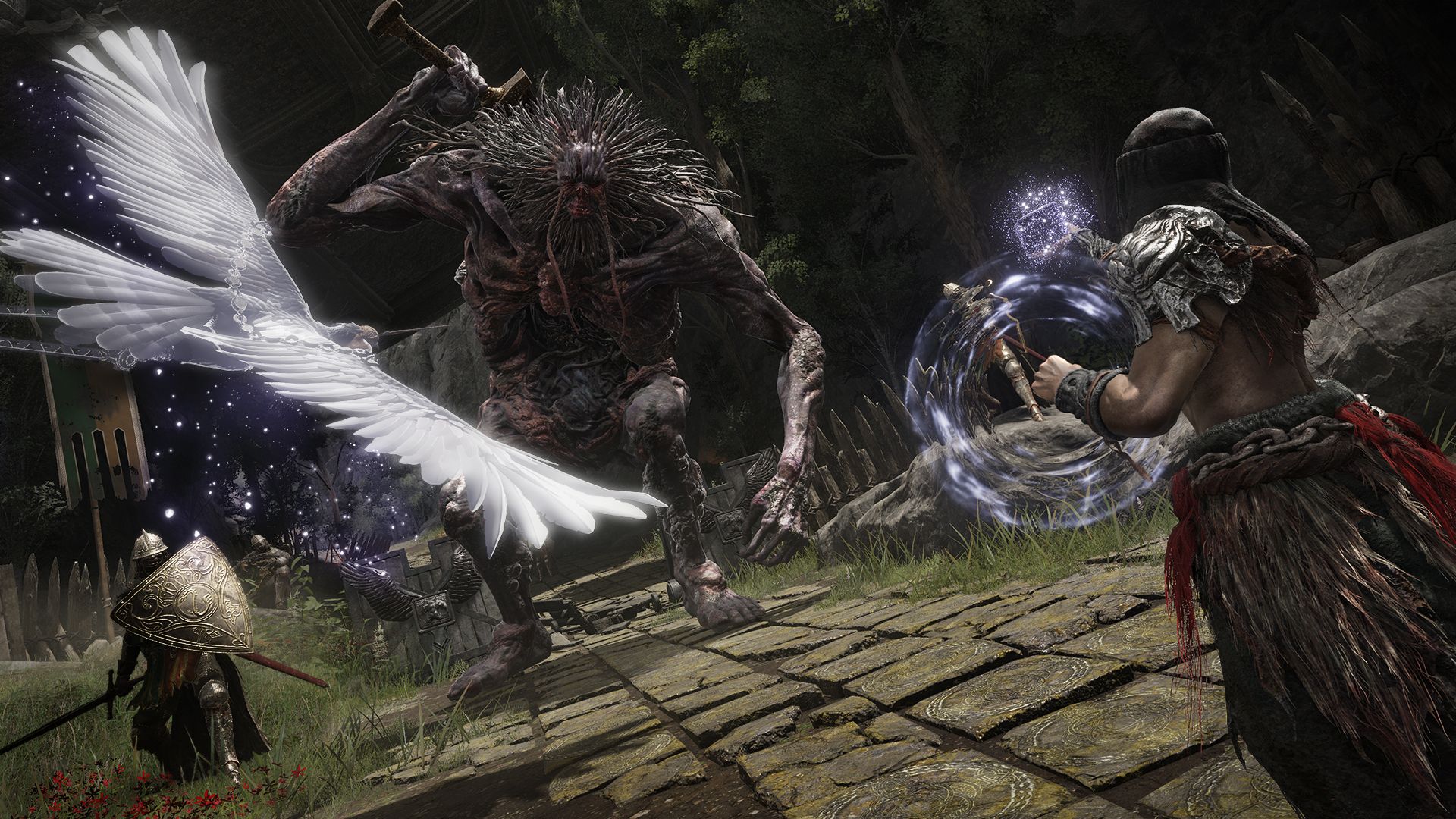I’ve always been drawn in by the silence of FromSoftware’s world design. Ever since the release of Eternal Ring for the PS2 back in 2000 I’ve been enamoured by how it depicts bleak, apocalyptic fantasy settings that all but relish in their own misery.
The first-person dungeon crawler was a janky, overly difficult mess - a bit like Elden Ring amirite?!?! - but there was something about its foreboding music and first-person perspective that kept baby Jade playing for hours on end. As Mark Corrigan would say, everything feels completely and utterly fucked, and there’s a morbid appeal to unearthing the lost civilizations and miserable remnants of living beings that still struggle to call this place home.
But you rarely visit these locales in their prime. Dark Souls 2 saw us travel back through time to partake in epic conflicts, but these had already been etched into history, with us joining the fray long after things had begun to fall apart. Lordran, Drangleic, Yharnam, and now The Lands Between all feel the same. We are twisted voyeurs pilfering through the ruins of castles in search of precious resources, ripping weapons from corpses and opening chests that have long become coated with dust. It feels like these places haven’t been occupied for decades, except for enemies who only exist to strike down whoever passes by.
The same can be said for its bosses. Nobody does boss battles like FromSoftware. While other studios have produced exhilarating set pieces and adrenaline-fueled encounters, there’s an artistry to the royal lords and sprawling dragons you fight in Elden Ring that trounce anything that seeks to compete with them. Whether I’m stumbling across an undead pigeon corpse in the midst of a misty swamp or a gold-hoarding troll at the bottom of an abandoned mine - everything in this world has a story to tell that is worth uncovering.
They have names, history that defines their current circumstances and why they’ve been put into a position to fight The Tarnished, foolish enough to step through the fog gate. The Five Lords who partook in The Shattering easily have the most backstory in Elden Ring, each playing a key role in how this land came to be so desolate and devoid of life. You are encouraged to speak with NPCs and piece together environmental clues that provide greater context, but there’s also beauty in the abstract and ignoring these details altogether, painting your own narrative of inevitable tragedy through imagery and adversity alone.
The Ancestor Spirit is a definite highlight in Elden Ring. It’s similar in execution to Great Grey Wolf Sif in the original Dark Souls. Once a partner to Artorias the Abysswalker, this giant canine now spends eternity watching over the grave of his beloved master, content to fight anyone who dares enter his domain. He misses his owner, unable to accept his passing and thus labels himself as a permanent guardian to his resting place. It’s a touching story, and one the game is happy to lean upon once the fight begins.
You constantly feel like this encounter is wrong, like Sif doesn’t want to fight you and is defending this place out of honour. As you begin to win, he will limp around the arena, whimpering in pain as his attacks become weaker and less frequent. He’s struggling to keep up, coming to terms with the eventuality of his own defeat. When he falls you feel awful, and he isn’t an optional boss, so there’s no way of avoiding this inevitable heartbreak. Nice one, you murdered a poor innocent giant wolf. Elden Ring’s Ancestor Spirit follows in these footsteps, putting you up against a majestic creature that I’m not sure wants to fight you.
Located in Siofra River underneath the hills of Limgrave, this boss is reached once you light all the braziers located across the underground caverns. Once done so, approaching his corpse in the temple ruins will transport you to a boss battle where the spirit awaits. He’s a beautiful deer with immaculate horns and feet that leave behind a blistering trail of blue inferno wherever he goes. His attacks are oddly subdued, relatively easy to avoid despite his large stature and powerful damage output. It feels like self-defence, like he isn’t fighting to kill, but to keep us at bay or to perhaps ask us to turn back. Or maybe he’s been waiting for someone to solve his puzzle and beat him in combat, but has been down here so long that fighting back now feels like a lost cause, like he’s already resigned to defeat and prepared to move on.
There are so many possibilities here that I drew from little more than my own actions and the accompanying music. The atmosphere is palpable, causing me to tear up as the Ancestor Spirit’s health bar dwindled down into nothing. When I emerged victorious I wasn’t filled with satisfaction, but a curious melancholy about who this boss was and where they came from, and if there was anything I could have done outside of combat to prevent their demise. I killed them, and FromSoftware isn’t afraid to pit us against enemies whose morals aren’t always clear.
Ruined kings might rest atop towers believing their cause is righteous, duelling us to the death to ensure their ideology lives on, while sometimes we’ll just be duking it out with a giant ugly rat. Both encounters are thrilling, and all of them have meaning no matter how poignant or outlandish. Few games manage to pull this kind of thing off, and the Ancestor Spirit is one of many bosses in Elden Ring that will occupy your mind long after they’ve been struck down. I’m sorry for killing you all those years ago, Sif.







.jpg)
